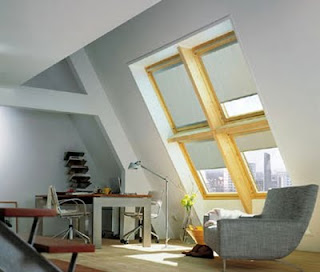 |
| Eco Custom Homes : 1890 House in Decatur, GA |
Achoo, cough, ahem,…..As you clear your throat and blow your nose, try to understand that your symptoms could be very well caused by possible hidden dangers that lurk throughout your home. Toxicants found within a home are by far more hazardous than those found outdoors. People spend much more time indoors within confined spaces where high levels of toxicants can be found.
Synthetic materials and household cleaning products can contribute to the release of toxic fumes and poor air quality in a home. Most people are not aware of this fact and are unable to recognize the link to asthma, other respiratory issues, fatigue, headaches, allergies, etc. to one’s home.
Below are a few facts and tips to help create a healthy home and provide insight on living a more natural, nontoxic lifestyle.
Flooring
Most carpets found in homes are made of synthetic materials thus contain toxicants such as petrochemicals and VOCs, volatile organic compounds. Petrochemicals are derivatives of petroleum and VOCs are toxic carbon based compounds. Carpets can be known to off gas these toxicants in a home up to five years. Carpet also absorbs dust and dirt becoming the perfect environment for mold and fungus. Vinyl and certain types of linoleum flooring can also be considered to be toxic; they are also known to off gas volumes of VOCs.
Healthy flooring choice for a home to consider are stones, porcelain, ceramics, sustainably harvested wood flooring (finished in environmentally friendly stains and finishes) such as maple, fir, oak, or cherry, and also carpets made from organic materials; such as wool, hemp, and sisal. Always consider the purpose of a space in which flooring will be used rather than aesthetic appeal, in other words health over beauty. For instance, basement applications tend to experience dampness, carpet installation could foster mold growth if moisture is a known issue in the basement.
If you are unable to change your flooring to a healthy choice, try shampooing your carpet with a Nontoxic Carpet Shampoo or covering vinyl and linoleum with a Natural Fiber Rug to reduce contact with floor.
 |
Apartment Therapy: Reclaimed Wood Flooring – Flooring made from recycled wood found in landfills, old buildings, barns, etc. |
Fabric
Many fabrics for the home are man-made in fiber and process, and during process are likely chemically treated for stain resistance and fire retardants. To accomplish those "desired" results, formaldehyde and petrochemical products are typically used in process. Formaldehyde is a carbon compound that is known to be a human carcinogen, cancerous; creating deficiency in healthy home environments.
Organically grown cotton, linen, silk, and hemp are known fabrics that are produced with low impact dyes and no fire retardants or stain resistant treatments; great fabrics for a healthy home.
 |
Amenity Home: 100% organically grown and organically pressed cotton duvet |
Paint
Conventional paints, especially synthetic oil based paints, are a major contributor to air quality in the home. They tend to be extremely high in VOCs. These known traditional paints off gas creating pollutants; they also contain fungicides as well as mold inhibitors.
When buying paint choose paint with low VOC’s, or even better ZERO VOCs. Try to consider using paints made from tree / plant oils, herbal extracts, and or mineral / vegetable pigments.
 |
Benjamin Moore: Zero-VOC Interior Paint |
Cleaning Products
Check this out …. Common chemical based cleaning products attribute to symptoms ranging from respiratory problems to skin discoloration and associations to cancer! Always read the ingredients on the back of cleaning products. Don’t be surprised to find health warnings on the back as well!
Nontoxic cleaning products can be found in local health food stores, online, or already in your pantry! Healthy choices for cleaning products are Borax, lemon juice, steel wool, and vinegar.
 |
Melaleuca Cleaning Products are made up of naturally derived ingredients with no chlorine bleach , ammonia, or formaldehyde. |
Explore further topics for A Healthy Home and consider other changes that can be implemented in your home. Please feel free to comment and share your findings below.
By Valene Greene
Veluxe Interiors
www.veluxeinteriors.com
Sources:
The Healthy Home Workbook by Kimberly Rider
Karen Raymer (Eco-Design Consultant) from SutainATL, Eco Custom Homes and Waldenour



















































